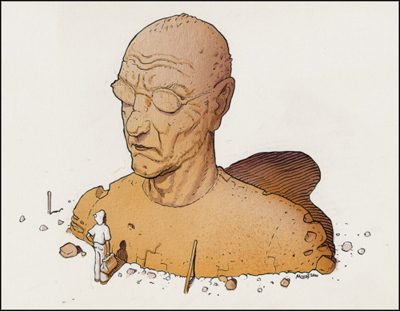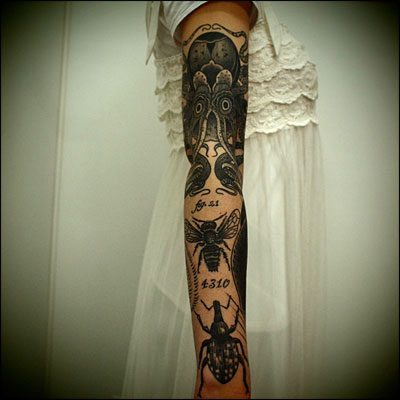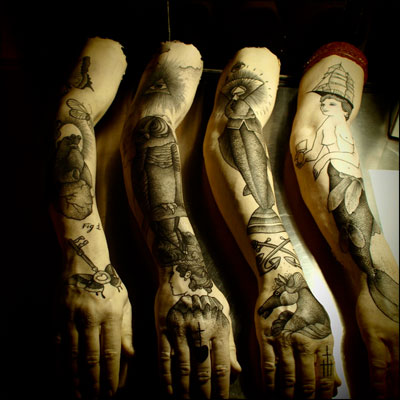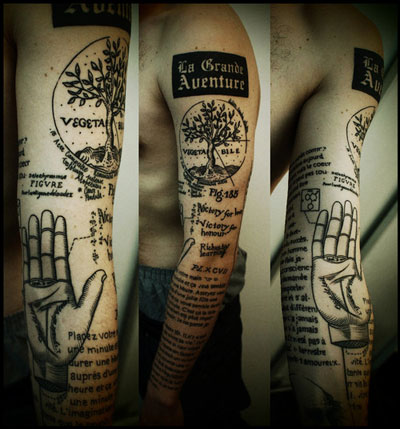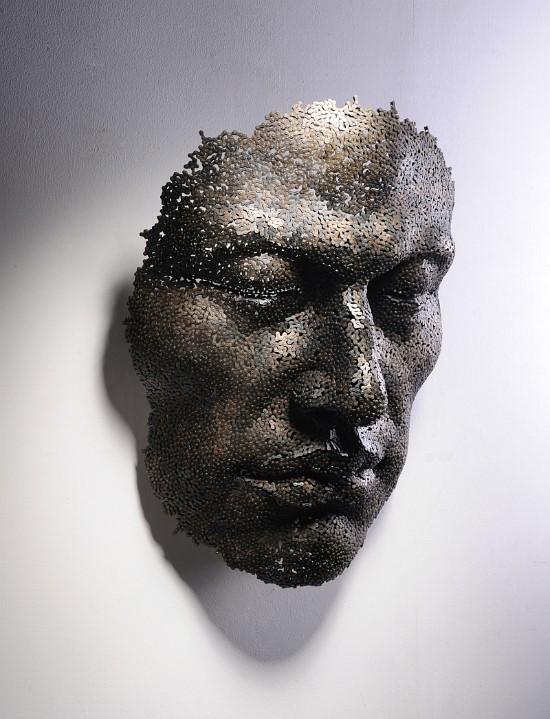Coilhouse Interview: Molly Crabapple Discusses Art, Occupy, and "Shell Game"
In September of 2011, shortly after launching a highly successful Kickstarter campaign, our intrepid chum Molly Crabapple locked herself into a hotel room in New York City for a week, eventually filling 270 square feet of paper-covered wall with her art. Yesterday, IDW published The Art of Molly Crabapple, Vol #1: Molly Crabapple’s Week In Hell, a book chronicling the whirlwind project (with beautiful contributions from several more Coilhouse friends: photo documentation by Steve Prue, a cover shot by Clayton Cubitt, and a foreword by Warren Ellis).
Last week, Molly returned to Kickstarter to launch Shell Game, a crowd-funded art show about the massive ongoing international financial meltdown. For Shell Game, she plans to create “nine giant paintings about the collapses and upheavals of the last year, then rig out storefront like a gambling parlor and display them to the city and the internet for a week.” Shell Game is an experiment of sorts for Molly, who is keen to fund large scale, labor-intensive work without having to depend on wealthy collectors. This type of crowd-funding is, she hopes, “a way of finding Medici in the crowd.”
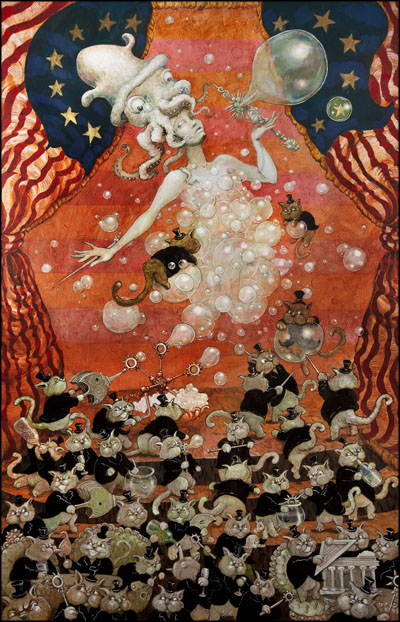
“The Great American Bubble Machine” by Molly Crabapple, the first of nine in her Shell Game series.
As they did with Week In Hell, $1 contributors get to peep at Molly’s progress through a backers-only blog with livestreamed painting sessions, and those who donate larger amounts receive incrementally impressive artistic rewards. With well over a week still left to go, the campaign has already raised well over 50K through backers small and large. DANG.
Today on Coilhouse, Molly Crabapple tells us more about the Shell Game campaign, and shares related thoughts about the nature of Occupy and the future of art… and vice versa.
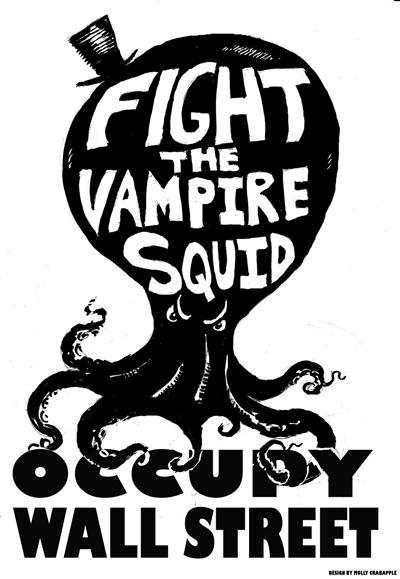
Molly’s “Vampire Squid” stencil, as seen at various Occupy camps all over the world.
You’ve mentioned that, until 2011, you weren’t comfortable with making political art, that you were “afraid of being hypocritical, propagandistic or boring.” Can you tell us a bit about the specific thought process that changed your mind? Was there some particular catalyst, or was it a gradual shift in perspective?
I’m an essentially capitalist little hustler who likes Louboutins and who draws frivolous things, sometimes for very rich people. For a long time, I felt this if I made “activist art” it was straight up radical posturing. I didn’t want to win cool points on someone else’s movement. So I’d donate money or sell work for charity, but hide any subversive thoughts in a whole lots of illustrative metaphor. My thoughts started changing when I painted The Box in London. Suddenly I was drawing straight-up parodies of the British class system on the walls of what would be one of the world’s most depraved nightclubs, while being given a privileged view of the student occupations by the unspeakably brilliant journalist Laurie Penny. Suddenly avoiding politics in my art seemed like a cop-out. Wikileaks, Wisconson, and finally Occupy Wall Street meant that upheaval was hitting America. I had to engage.
Has there been any criticism thrown at you about your means of involvement? If so, how do you engage with that?
I’ve had a few people call me an evil latte liberal or whatever, but honestly, who cares. The idea that you have to be a vegan saint to care about having a vaguely just world is just a way of making sure no one does anything.




